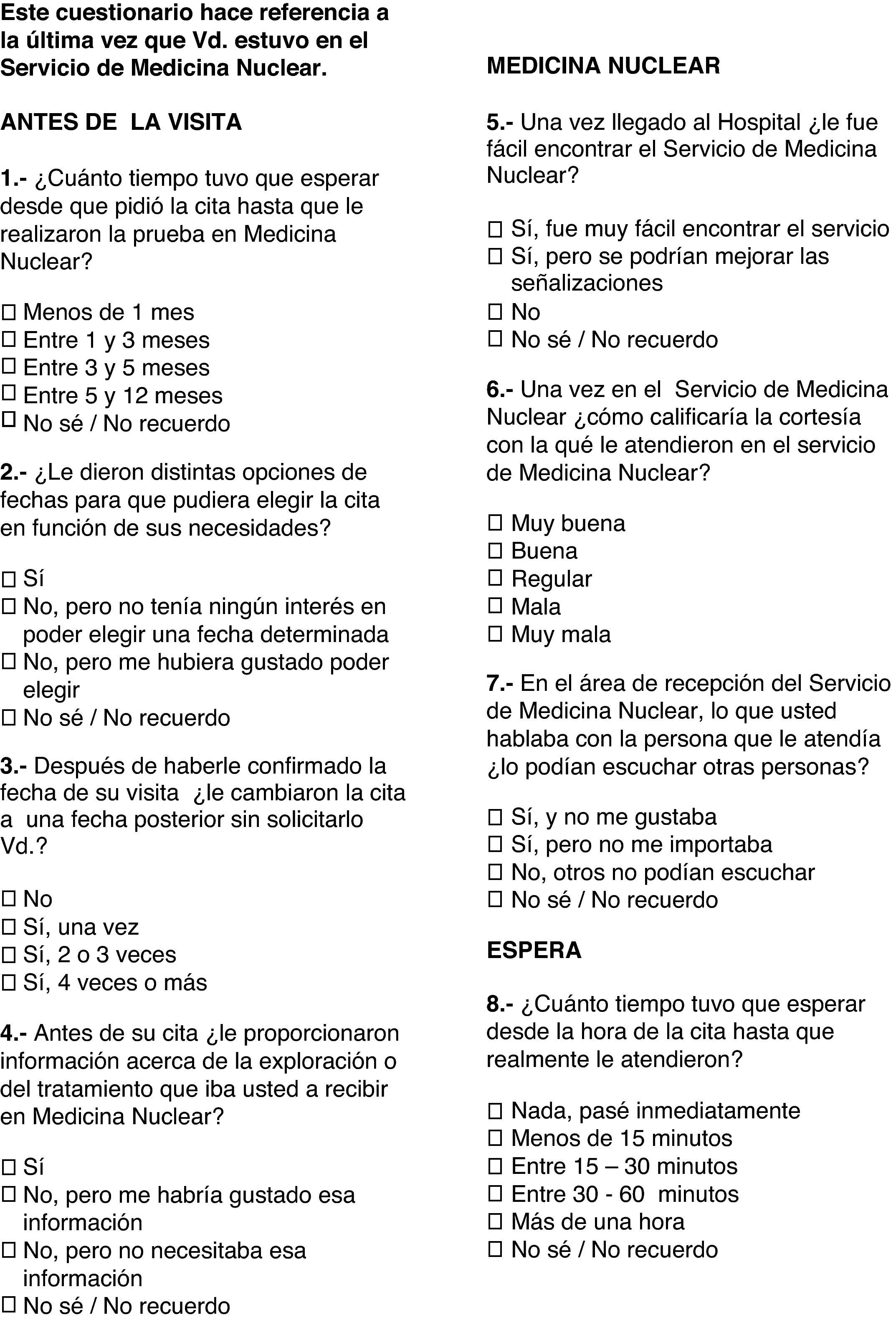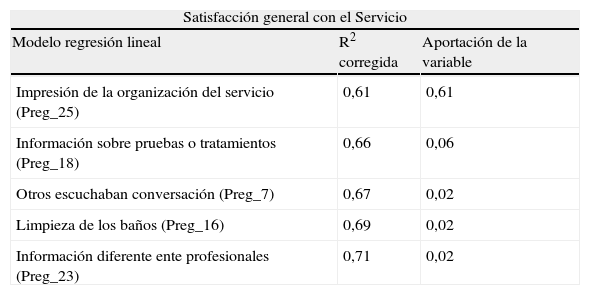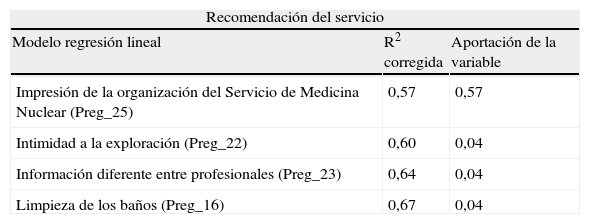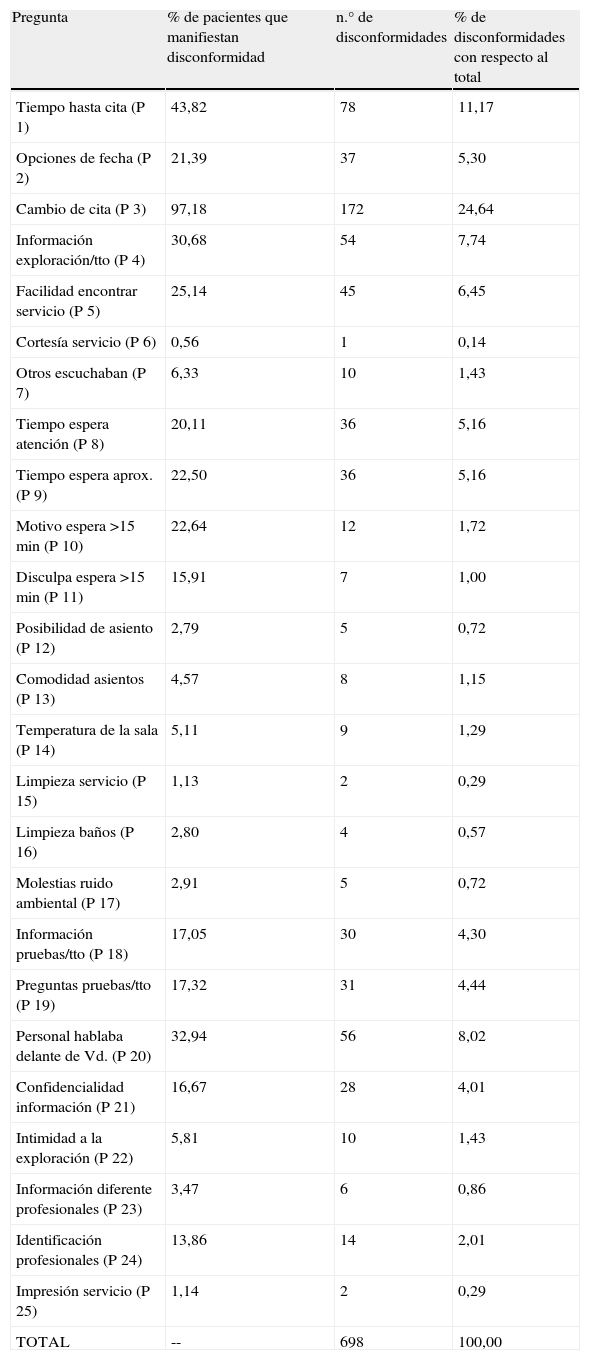Conocer la calidad percibida y el grado de satisfacción de los pacientes con el servicio de Medicina Nuclear (MN).
MetodologíaEstudio descriptivo transversal. Se diseñó un cuestionario, adaptando un cuestionario elaborado por el National Health Service. Se analizaron las respuestas de 32 ítems, incluyendo 4 preguntas socio-demográficas y una abierta. Las variables relacionadas con la calidad de servicio se recodificaron en conformidad y no conformidad. Se midió la validez del cuestionario a través de los coeficientes alfa de Cronbach y de determinación (R2). Se utilizaron los test estadísticos χ2, t de Student, ANOVA y análisis de regresión lineal.
ResultadosFueron analizados 179 cuestionarios (tasa de respuesta: 36,6%, error muestral: 5,8%). La valoración de la satisfacción general y la recomendación del servicio de MN obtuvieron una puntuación media de 8,96 y 9,20 puntos respectivamente (escala 1-10). La variable que más influyó en la satisfacción general fue la impresión de la organización del servicio. Los principales puntos fuertes del servicio fueron la cortesía, la impresión de la organización del servicio y la limpieza; y las principales áreas de mejora, el cambio de cita y la lista de espera. No hubo diferencias significativas en la satisfacción en función de las variables sociodemográficas excepto para la edad.
ConclusionesLa encuesta de satisfacción realizada nos ha permitido conocer que los pacientes están satisfechos con el Servicio de MN y, al mismo tiempo, constituye un instrumento útil para poder detectar los puntos fuertes y áreas de mejora del servicio desde la óptica del usuario.
To know the perceived quality and the levels of patient satisfaction with the Nuclear Medicine Service (MN).
MethodsA cross-sectional descriptive study was performed. The authors designed a self-applied questionnaire based on a questionnaire from a survey created by the National Health Service of the UK. The answers of 32 items were analyzed, including 4 social-demographic questions and one open question. The authors recoded the variables related to service quality and recorded them as “in accordance” and “not in accordance.” The validity of the questionnaire was measured using Cronbach‘s alpha and determination (R2) indexes. The authors used the χ2, Student‘s T, ANOVA and linear regression analysis statistical tests.
ResultsA total of 179 questionnaires were analyzed (response rate: 36.6%, sampling error: 5.8%). Evaluation of general satisfaction and the recommendation of the NM Service obtained a mean score of 8.96 and 9.20 (1-10 scale) points, respectively. The most influential variable regarding general satisfaction was the general impression of the organization of the service. The strong points of the service were courtesy, general organizational image and cleanliness. The main areas for improvement were appointment change process and waiting list. There were no significant differences regarding satisfaction due to the social-demographic variables except for age.
ConclusionThis satisfaction survey has shown that patients are satisfied with the Nuclear Medicine Service and that it is a useful tool to detect the strong points and areas for improvement of the Service from the user‘s perspective.
Artículo
Comprando el artículo el PDF del mismo podrá ser descargado
Precio 19,34 €
Comprar ahora














